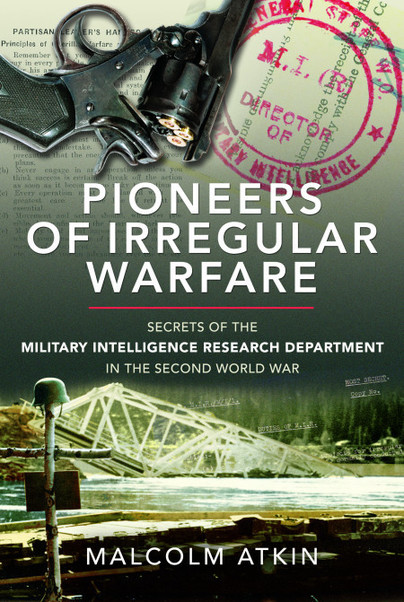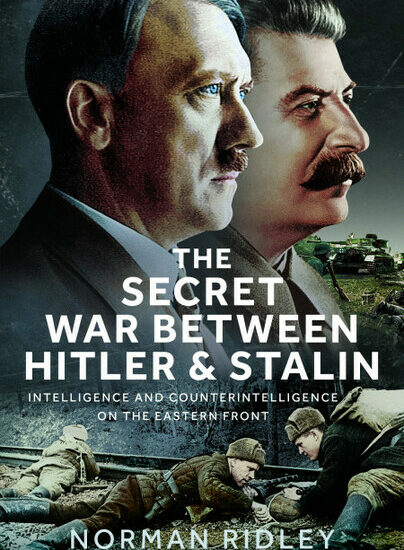Author Guest Post: Malcolm Atkin
History is determined by those who write it
Malcolm Atkin
It is a long-accepted truth that the history of war is written by the winners. This is not simply a matter of stories from the battlefield but can also be reflected in the race to establish one’s own personal perspective in print. The history of the Second World War is littered with autobiographies and biographies which have been accepted as accurate historical sources as if the very act of seeing them on the printed page gives them a validity. This is especially true in the secret world of intelligence and special operations where for decades it was impossible to corroborate the early stories of heroism and derring-do.
One of the best known figures in Second World War special operations is Colin Gubbins, who became head of the legendary Special Operations Executive (SOE). Such is the aura that has been created around him that barely a word of criticism has been published about his story. Yet during the war itself he was viewed with suspicion, viewed as being overly-ambitious and even by one contemporary as ‘evil’.
Pioneers of Irregular Warfare: secrets of the Military Intelligence Research department in the Second World War re-examines the legend of Colin Gubbins through his role in the Independent Companies, his battles with SIS (MI6) and the formation of the Auxiliary Units. This is a story driven by personal ambition. In MI(R) he was responsible for relations with the early Polish and Czech resistance but spent much of his time in-fighting with Section D of SIS, repeatedly trying to impinge on the responsibilities of the latter and denigrating its leader, Colonel Laurence Grand. He repeatedly over-sold what MI(R) could offer to the Poles and Czechs (to the embarrassment of the head of MI(R), Colonel Jo Holland) and was eventually recalled to England. He craved for action and was next sent to command the Independent Companies in the Norwegian campaign. Here he arguably sacrificed the career of a successful Scots Guards officer to win favour with General Auchinleck – then built his reputation in that campaign on the success of the fighting retreat for which Colonel Trappes Lomax had been dismissed. He returned to England in temporary command of 24th (Guards) Brigade but the original commander returned from sick leave, leaving Gubbins unemployed. Having already cultivated a reputation as an expert in guerrilla warfare theory (through the seminal 1939 pamphlets The Art of Guerrilla Warfare and Partisan Leader’s Handbook), he was given command of the new GHQ Auxiliary Units. This should have been an opportunity to put the principles of MI(R) that they had been promoting abroad to the test. Yet curiously Gubbins initially floundered in deciding how to organize the Auxiliary Units, in large part because he was torn as to their actual purpose, eventually accepting the War Office view that they were to be a uniformed guerrilla force to support the field army in the event of invasion rather than a longer-term resistance organization. Once the main threat of invasion in 1940 had passed, he moved into the new SOE, which needed a senior army officer to try to improve relations with the War Office. In SOE he initially found he had an impressive title as Director of Operations, but limited real power, and was not even given an office in their Baker Street HQ. He steadily built up his portfolio of responsibilities and in 1943 finally became head of SOE. He re-introduced some of the para-military principles of MI(R) and was able to improve the working relationship with the War Office, which would be critical for establishing the reputation of SOE during the D Day campaign. But he was also in charge during SOE’s greatest lapse in security when it failed to realise its wireless networks in Holland had been penetrated by German Intelligence, sending many agents to their deaths.
After the war, the responsibility for what to do with SOE passed to the head of SIS, Stewart Menzies – who had a long memory of battles with Gubbins. So it was that Colin Gubbins, now an Acting Major General, was unceremoniously retired on the pension of his substantive rank of colonel. This was an act of pure spite and what made it worse was that his former colleagues and sometime rivals in MI(R) and Section D, Jo Holland and Laurence Grand both had the kudos of retiring as major generals.
Gubbins would not let this slight pass easily and had a close circle of allies from the former SOE who were equally dismayed by the treatment meted out to their former leader, and by extension to the organisation for which so many had sacrificed their lives. They therefore began to re-write history to put Gubbins in the best possible light. As part of this, anything he had been connected with in MI(R) automatically began to be assumed to be superior than anything his rivals in SIS could have achieved. This was evident in the first history of SOE that Gubbins had himself commissioned in 1945 and was completed in 1947 (although William MacKenzie’s Secret History of SOE was not published until 2000). He also advised M.R.D. Foot to the same ends in Foot’s later history of SOE. Meanwhile, neither Jo Holland and Laurence Grand ever broke their silence regarding their own secret war, allowing a lop-sided myth to become entrenched. Since then there has been a rash of books by, and about, former SOE operatives with a focus on the heroism of individuals rather than what can be a sometimes uncomfortable strategic assessment of its accomplishments, the overall impression considerably skewed by the reluctance of SIS to lift the shroud of secrecy over its own operations.
Pioneers of Irregular Warfare: secrets of the Military Intelligence Research department in the Second World War by Malcolm Atkin is published by Pen & Sword in April 2021.

See also Section D for Destruction: forerunner of SOE by Malcolm Atkin (Pen & Sword 2017)


